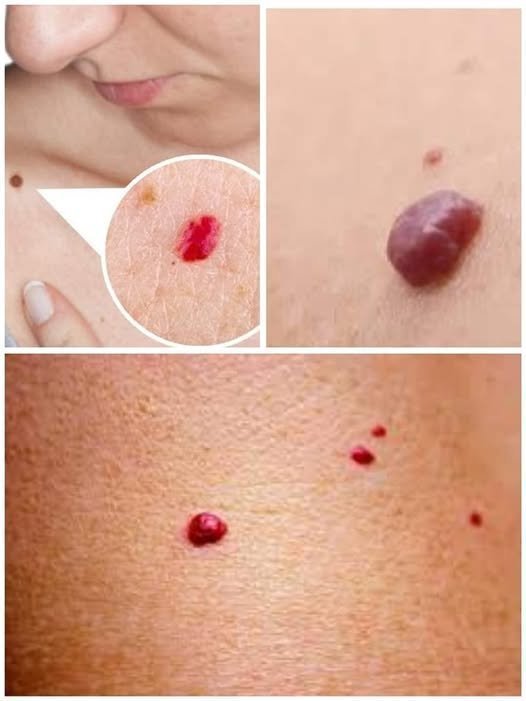ADVERTISEMENT
### **Red Moles and Their Connection to Health Conditions**
Although red moles are often benign, they may be linked to several underlying health conditions. While it’s important to remember that most red moles are not indicative of a serious health problem, certain patterns or accompanying symptoms can be important to monitor.
1. **Liver Disease**: A significant number of cherry angiomas have been associated with liver dysfunction. People with liver disease, such as cirrhosis, may develop more red moles. These angiomas are thought to be related to impaired liver function, which may affect blood circulation and the growth of blood vessels in the skin.
2. **Hormonal Imbalances**: Hormonal changes can also lead to the development of red moles. Women may notice that they develop more red moles during pregnancy due to hormonal fluctuations. Similarly, people undergoing hormone therapy or taking oral contraceptives may be at higher risk for developing these skin growths.
3. **Diabetes**: There is some evidence to suggest that individuals with diabetes may be more likely to develop red moles. While the exact cause is unclear, it’s thought that changes in blood sugar levels and insulin resistance may contribute to the formation of these growths.
4. **Thyroid Disorders**: Conditions like hypothyroidism or hyperthyroidism can lead to changes in skin appearance, and in some cases, red moles may be more prevalent in individuals with thyroid dysfunction.
5. **Autoimmune Diseases**: Some autoimmune diseases, such as lupus or scleroderma, can contribute to the development of red moles, though more research is needed to establish a direct connection.
6. **Age and Genetics**: Age is a primary factor in the development of red moles, with many individuals seeing an increase in their appearance as they age. Genetics also play a role, with those who have family members with a history of cherry angiomas being more likely to develop them as well.
—
### **How to Treat or Remove Red Moles**
In most cases, red moles are harmless and do not require treatment. However, if a red mole is bothersome or if you are concerned about its appearance, there are options for removing or reducing it. Treatments for red moles include:
1. **Laser Treatment**: One of the most common methods for removing red moles is laser treatment, which uses a focused beam of light to destroy the blood vessels causing the mole. This procedure is non-invasive and leaves minimal scarring.
2. **Electrosurgery**: Electrosurgery uses an electrical current to burn off the mole. This treatment is typically done under local anesthesia and is effective for removing red moles that are raised or protruding.
3. **Cryotherapy**: Cryotherapy involves freezing the mole with liquid nitrogen. This method is particularly effective for smaller moles and results in the mole falling off after a few days.
4. **Shaving or Surgical Excision**: In some cases, particularly for larger or more prominent red moles, a healthcare provider may opt to shave or surgically remove the mole. This procedure may be done under local anesthesia and requires careful follow-up to ensure proper healing.
It is essential to have any mole removal performed by a trained healthcare professional to minimize the risk of complications and ensure the mole is removed safely.
—
### **Conclusion: When to Seek Medical Attention**
Red moles are common and usually harmless, but their appearance can sometimes be a sign that your body needs attention. If you notice that your red moles are changing in size, shape, or color, or if you experience symptoms such as bleeding, pain, or discomfort, it’s important to seek medical advice. Most of the time, red moles are a benign condition, but any changes in your skin or moles should always be monitored.
By understanding the causes, symptoms, and treatment options for red moles, you can make informed decisions about your health. If you are concerned about any of your moles or suspect they may be related to an underlying health condition, don’t hesitate to reach out to your healthcare provider for an evaluation and personalized guidance.
